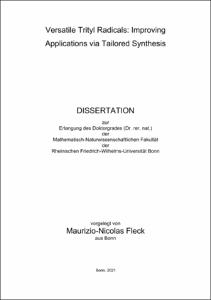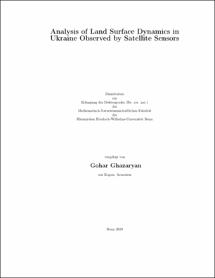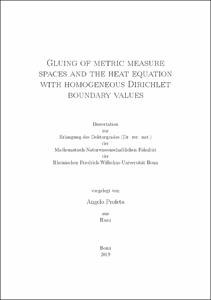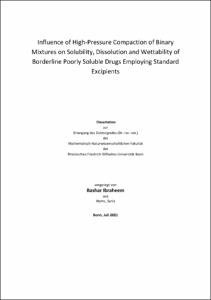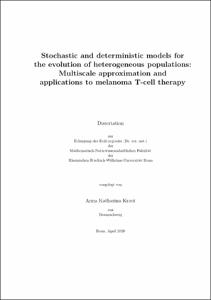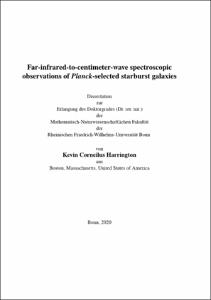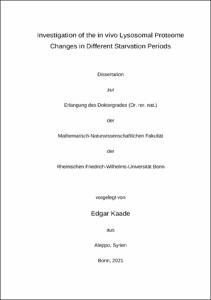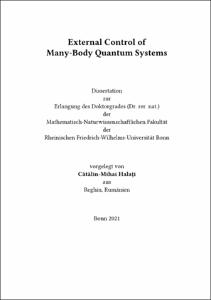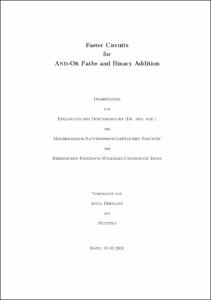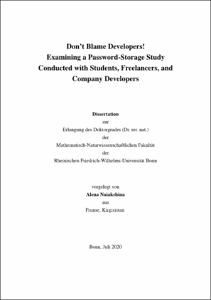The Faculty of Mathematics and Natural Sciences: Search
Now showing items 1-10 of 453
Versatile Trityl Radicals: Improving Applications via Tailored Synthesis
(2021-06-30)
Generally, organic radicals are considered as rather unstable and highly reactive species that are just intermediates of chemical reactions.
However, this paradigm was disproved already in 1900 my Moses Gomberg, ...
However, this paradigm was disproved already in 1900 my Moses Gomberg, ...
Analysis of Land Surface Dynamics in Ukraine Observed by Satellite Sensors
(2020-06-18)
Land surface changes, induced by anthropogenic or climatic drivers, can dramatically impact ecosystem functioning. The growing amount of data from remote sensing and complementary data sources greatly supports the ...
Gluing of metric measure spaces and the heat equation with homogeneous Dirichlet boundary values
(2020-07-09)
The first part of this thesis deals with gluing together several copies of an open subset of a metric measure space along the complement. This construction results in a metric measure space. We identify the Cheeger energy ......
Influence of High-Pressure Compaction of Binary Mixtures on Solubility, Dissolution and Wettability of Borderline Poorly Soluble Drugs Employing Standard Excipients
(2021-12-14)
Many of new drug candidates are impaired by low aqueous solubility and slow dissolution rates, which may hinder their pharmacological response. Therefore, there is an increasing need to investigate and implement new ...
Stochastic and deterministic models for the evolution of heterogeneous populations: Multiscale approximation and applications to melanoma T-cell therapy
(2020-07-24)
Stochastic modelling at the interface of mathematics and life sciences has gained great attention over the last decades. The study of many complex biological systems requires models taking random effects into account. Both ...
Far-infrared-to-centimeter-wave spectroscopicobservations of Planck-selected starburst galaxies
(2021-03-15)
Star-formation processes in the early Universe have had a dramatic influence on the further development of galaxies. The peak era for stellar production occurred in early cosmic times, and most of the stars that could have ......
Investigation of the in vivo Lysosomal Proteome Changes in Different Starvation Periods
(2021-04-09)
Nutrient deprivation can change the activity and subcellular localization of a protein. The cellular response to starvation includes the autophagy/lysosomal degradation pathway and the nutrient signaling pathway via the ......
External Control of Many-Body Quantum Systems
(2021-10-05)
In strongly correlated many-body quantum systems, the complex interplay between a large number of degrees of freedom and the presence of various competing energy scales leads to rich phase diagrams, but also renders these ...
Faster Circuits for And-Or Paths and Binary Addition
(2020-07-24)
We consider the problem of constructing fast circuits both for binary addition and And-Or paths. And-Or paths are Boolean functions of the form t0 ∧ ( t1 ∨ ( t2 ∧ ( t3 ......
Don't Blame Developers! Examining a Password-Storage Study Conducted with Students, Freelancers, and Company Developers
(2020-12-11)
Authentication systems are a major concern for the usable security and privacy community. Twenty years ago, the seminal work “Users Are Not The Enemy” [1] by Adams and Sasse initiated a user-centred approach to research. ...


